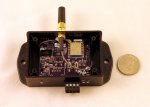A couple of years ago, I reverse-engineered Jandy's bus protocol for their controller (including AquaPure and ePump protocols) and developed my own device to control it using a custom web interface. I didn't really like the Jandy iAquaLink since it was cloud-based, hard to integrate into my setup, and the Android app is a bit clunky.
I recently added SmartThings and Alexa to my Vera-based home automation and I wanted my device to be easier to integrate so I developed a Philips Hue bridge emulator for it so that now Alexa, ST, and Vera all see it as a Hue bridge and all of the Jandy controls appear as simple switches. This makes integration on all three one button simple without having to worry about installing extra plugins or other integration components.
I do a fair amount of Android development in my professional life so I also created an Android application to provide even more control including a virtual OneTouch panel that looks and acts just like the real thing.
I just wanted to share in case anyone was interested.
Here are some Android screen shots:




Here is what it looks like in SmartThings:


I recently added SmartThings and Alexa to my Vera-based home automation and I wanted my device to be easier to integrate so I developed a Philips Hue bridge emulator for it so that now Alexa, ST, and Vera all see it as a Hue bridge and all of the Jandy controls appear as simple switches. This makes integration on all three one button simple without having to worry about installing extra plugins or other integration components.
I do a fair amount of Android development in my professional life so I also created an Android application to provide even more control including a virtual OneTouch panel that looks and acts just like the real thing.
I just wanted to share in case anyone was interested.
Here are some Android screen shots:




Here is what it looks like in SmartThings:




